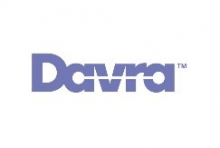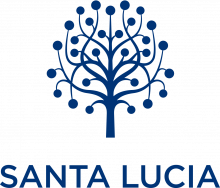
Objectives of the service
Lifesaving Location Service (LifeLoS) is a new system aimed at managing patient risk derived from their behaviour. It is intended to be used inside a hospital, but the final solution will easily fit SPAs, campuses and every structure with outdoor and indoor areas in which people safety has to be monitored.
The solution tracks people position using several devices like smartphones, smartwatches and wristband, and is open to welcome any other with similar characteristics; data is collected into a platform and allows to avoid aggregation to prevent COVID-19 (or any other infection) spread.
Beside this, it is able to recognize man-down and man-lost events: in case a person falls losing senses, or gets out of the monitored area, the system will trigger an alert allowing a timely reaction.
LifeLoS allows to decide new paths and define geofences, guiding people towards their destination inside the monitored area using the most safe path. It allows to avoid overcrowding and to help freeing an area to facilitate first aid in case of need.
Users and their needs
The users are people accessing a hospital. First of all, patients; then doctors, caregivers, and visitors. These profiles have slightly different needs, listed above for clarity.
Patients:
-
Communicate position, for every visit and need of the caregivers
-
Alert in case of man-down event, to receive assistance
-
Alert in case of man-lost, to be traced (especially the ones with neurological problems)
-
Avoid overcrowding by using the best path
-
Doctors and caregivers
-
Know patients position
-
Intervene in case of need (man-down, man-lost events)
-
Avoid overcrowding by using the best path
Visitors
-
Avoid overcrowding by using the best path
Security
-
Intervene in case of need (man-lost events)
-
Avoid overcrowding by using the best path
The challenge for the project is to identify all these profiles, provide them a device and receive all the information inside a platform that can elaborate it to generate alerts, manage paths, present a management interface for fences and boundaries to admin users.
Even if the project is tailored on the structure of Fondazione Santa Lucia buildings, potentially every hospital could use the system.
Service/ system concept
The system will enable traceability of people inside the Fondazione Santa Lucia Hospital. Patients in this structure are mainly affected by neuropsychiatric issues, thus the need to trace them is more important than in other hospitals, given they may lose orienteering capabilities. Beside patients, also visitors and structure personnel have to deal with tracking, to avoid aggregation. Devices transmit information about positioning to beacons installed along the path to monitor. The beacons communicate with a gateway connected to the internet, allowing to send data to Davra platform, which is ready to deal with device (and people) ID and understand position.
The IoT is integrated with smartphones, both allowing to drive visitors safely to their destination inside the hospital and to let Admin know when a significant event occurs.
The platform is composed by wearables, IoT devices, gateways, and the cloud running the Davra and Abaco instances. Last ones interoperate to obtain data, represent it in a console, ad send alerts to users.
Fondazione Santa Lucia made a video to promote the LifeLos project on social networks.
Space Added Value
Space assets used is Satellite Navigation to determine exact positioning: LifeLoS project uses this kind of data for the outdoor tracking of people. However, the evaluation is still open, as there may be room for IoT usage instead, to receive data in an easy format, already configured for indoor applications.
Current Status
The project has been fully rolled out by all the partners involved. All the devices in the project BOM have been rolled out in the Fondazione Santa Lucia premise - one floor - and the system and connectivity has been deployed to perform the required clinical function of the project.
Soon after the deployment of the system in May 2022 the pilot phase started and it involved over 500 users on a period of 6 months.
The pilot phase involved a mix of users to test all relevant use cases: Patients, most of them affected by neurological diseases; Medical Staff; Stretcher bearers; Therapists; Nurses, Caregivers and Security Staff.
The tested use cases were: Man-Lost, Tracking, Man-down, Re-routing, Overcrowding, Restricted Areas.
The pilot successfully proved the following KPIs:
-
At least 95% of ‘Man down’ and ‘man-lost’ events are notified to doctors and / or nurses within 1 minute from their happening
-
At least 95% of events where a group greater than 5 people is in the same indoor area smaller than 45 m2 are notified to security within 1 minute and the area is temporarily closed.
-
When an area is closed or not usable, provide alternative route(s) to transfer services within 1 minute
The extensive study conducted by Fondazione Santa Lucia showed an excellent response by all categories of users in terms of usability and satisfaction on the LifeLos system.
The commercial exploitation of the system has been started with the development of a five years business plan focused on the definition of the necessary resources and the assessment of the competition landscape. The ILS market scenario analysed includes all 15 major companies in the market - as per the Gartner MQ 2022 - evaluated for contiguity with the functional and technical coverage of the LifeLos project.
LifeLos can be set to compete in the top-right corner of the quadrant defined over the dimensions of "Healthcare Fit" and "Technology Vision". The business developed on detailed demographic data coming from the Italian Ministry of Health shows an operational breakeven point in 18 months from commercialisation and a ROIC in 21 months.
A commercial teaser on LifeLos is available for viewing at: https://youtu.be/7JPBTFl2F7s.





